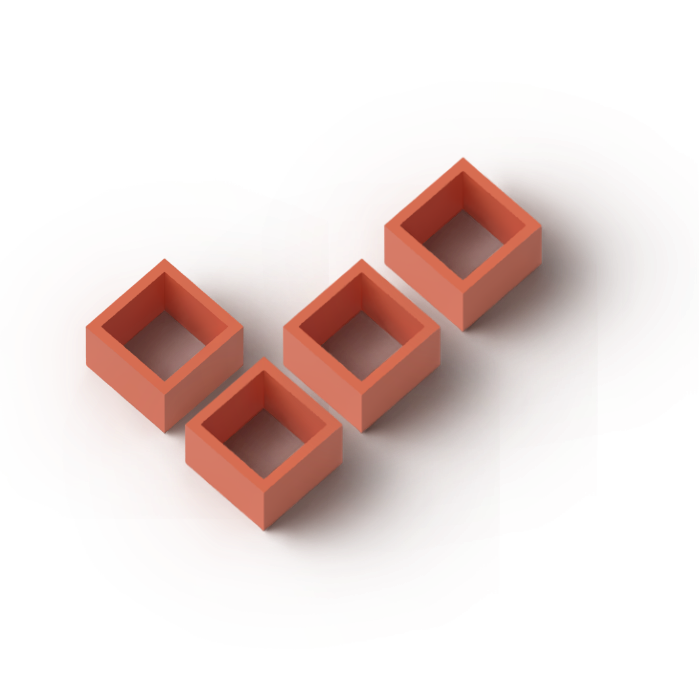
Why Cross-Functional Collaboration in Software Development Is Non-Negotiable
 Read Time: 7 minutes
Read Time: 7 minutesHow might a software project with siloed team members be like a family road trip gone wrong? Learn how adopting cross-functional collaboration can turn your team's conflicting roadmaps into a unified journey with a clear destination—better software.
Imagine you’re on a family road trip to San Diego. You’re driving and could use some assistance with navigation. Everyone is excited about the destination and volunteers to help. They pull out their devices and start working out the route. Your spouse, looking forward to some R&R, maps you to the beach. Little Sally is obsessed with pandas, so she plugs in the San Diego Zoo as your destination. Little Johnny has been building model boats and wants to see the Star of India, so his route goes to the harbor.
Everyone may be on the same page for a while, but once you get into town, you’ll be flooded with conflicting directions because everyone is reading from a different roadmap.
Similarly, custom software development has many component parts and dependencies. When projects are managed with a narrow focus on a single job role, or if departments are unaware of each others’ needs, everyone is reading from a different roadmap, and the resulting divided focus can result in new software, but not great software.
Many organizations struggle with this problem. Specialization leads to silos, and silos lead to friction, which ultimately can result in glaring communication gaps. Rather than embracing the effort required to collaborate, teams figure out ways to “stay in their lane” and do what’s possible within their own narrow scope.
However, creating a company structure that includes members from various departments in teams with diverse expertise will exponentially improve communication and ensure everyone follows the same roadmap. We’re going to look at five challenges that your organization may be experiencing and explain how building cross-functional collaborative teams can help.
1. Incomplete Solutions: Why Johnny is Getting Hungry
After some deliberation, you choose to follow Johnny’s map to the harbor and arrive at noon. Within fifteen minutes, you’re dragging a cranky, hangry kid down the boardwalk to look at boats. Mom, of course, knew this would happen. But because her input wasn’t considered when planning the route, this is where you are now.

When teams operate in silos and fail to collaborate, misunderstandings and misaligned priorities can lead to incomplete or inadequate solutions. Important considerations may be overlooked, resulting in software that doesn't fully meet user needs or address critical business requirements.
Siloed work is the antithesis of collaboration. To combat this, we apply a principle we refer to as “the town hall.” This means that questions are asked, answers are posed, and decisions are made in a forum where everyone can participate. When team members from different departments collaborate, they bring a wealth of unique perspectives, skills, and knowledge to the table. This diversity fosters innovation and leads to more effective problem-solving.
2. Inefficient Communication: The Beach Lot Closes at 5:00
Mom’s map takes you straight to the beach, and you arrive at 4:30pm. By the time you’ve unloaded the chairs and umbrella, it’s time to pack it in or drive slowly around the neighborhood praying for an empty meter. Johnny knew all about city lot hours because his boats are in the downtown harbor, where parking is an important factor. He mentioned this several times, but Mom didn’t hear his backseat warnings. Looks like you’ll have to re-do the beach trip another day.

Silos and poor communication go hand-in-hand. Without putting people in the same room (physical or virtual), teams may struggle to share information, resulting in duplicated efforts and delays. Lack of coordination can lead to inefficiencies, decreased productivity, and increased costs.
At TSG, we rely heavily on Slack as our primary communication tool. Every project has a dedicated channel, and all members of the team are encouraged to be engaged in the conversations happening therein. Further, Slack’s “huddle” feature makes it easy to hop into a conversation with representatives from multiple disciplines, such as development, design, and management. When it’s not possible to get everyone in the same huddle, the team is committed to deferring decisions until the relevant parties can have a say.
As a manager, breaking down barriers between departments is one of the most productive steps you can take to improve the quality of any product you’re developing. It enables smoother information flow, eliminates duplication, and streamlines processes. Effective collaboration optimizes resource allocation, reduces rework, and improves overall efficiency.
3. Suboptimal Decision-Making: I’m Pulling This Car Over!
You’ve had it! Everyone is shouting different directions and you decide to make an executive decision. You see an exit for “Rancho San Diego” and you take it. It’s an ok place. There’s no beach, no zoo, and no Star of India—but at least you ended up somewhere, right?

Software development involves numerous decisions that impact the success of a project. When decisions are made, it’s best-practice to document them in a format such as the Architectural Decision Record (ADR). At TSG, we keep our ADRs in Notion, where they can be available to the entire team. In addition, GitHub provides an excellent list of additional resources for ADRs. Having a standard format for tracking decisions, which includes a brief background, the final decision, the rationale for it, and who signed off, helps provide guidance throughout the project and prevents rework that comes from the “I forgot” mentality. Inevitably, when a decision needs to be amended, you now have a designated place to document the change, ensuring that the new decision is made with an understanding of the previous ones.
4. Problem Resolution Woes: Don’t Touch That Dial
Since your trip to San Diego is in the summertime, the air conditioning is set to max. You find it comfortable, but Mom is cold, so she puts on a sweater and sighs in annoyance. Johnny is on the sunny side of the backseat and feeling hot. Sally has secretly opened her window because she prefers the fresh air. Everyone is solving the “problem” of temperature control, but only in ways that don’t serve anyone else and ultimately come at the expense of your gas mileage.
In software development, challenges are bound to arise, from bugs to changing requirements. Problem resolution can be a slow and frustrating process when isolated teams lack the necessary expertise or fail to communicate effectively, leading to prolonged issues and project delays.
We empower our team members by training them on their roles as collaborators through a principle known as “hot potato.” The gist is this: Treat your assigned work tasks like a hot potato. Pass your work item on to the person who can next carry it forward. This mental model helps to prevent delays or missed deadlines.
By leveraging project-management tools with an effective task-tracking system and providing guidelines that show team members how to use them, we demystify who is responsible for each task and when it should be done. This ensures that tasks don’t fall through the cracks—they make it all the way through the process from inception to deployment.
5. Successful Integration and Deployment: Wish You Were Here!
Let’s say you avoided all the previously mentioned road trip problems and ended up having an amazing day in San Diego. Through communication and teamwork, you visited the zoo, the harbor, and then got to unwind down at the beach. It’s time to send a postcard to Grandpa. Sally bought one at the zoo with a panda bear on it. Mom writes the message because she has the clearest handwriting, Johnny puts a stamp on it, and you take it down to the hotel desk to be mailed. Without each family member’s contribution, Grandpa would never know how much you miss him!

The journey doesn't end with development. Integration and deployment require seamless coordination between different teams, such as development, operations, and infrastructure. Collaboration facilitates a shared understanding of requirements and constraints, minimizing issues and ensuring a successful transition from development to production. By ensuring smooth handoffs through effective communication, you can avoid functionality gaps or even system failures.
Promoting collaboration empowers your team to tackle complex problems from multiple angles, make well-informed decisions, and resolve issues efficiently. If you embrace cross-functional collaboration as a core value within your organization, you’ll encourage open communication, knowledge sharing, and teamwork. This approach breaks down silos and fosters an environment where diverse perspectives are valued. And all of this ultimately results in much better software.

We are custom software experts that solve.
From growth-stage startups to large corporations, our talented team of experts create lasting results for even the toughest business problems by identifying root issues and strategizing practical solutions. We don’t just build—we build the optimal solution.
From growth-stage startups to large corporations, our talented team of experts create lasting results for even the toughest business problems by identifying root issues and strategizing practical solutions. We don’t just build—we build the optimal solution.


